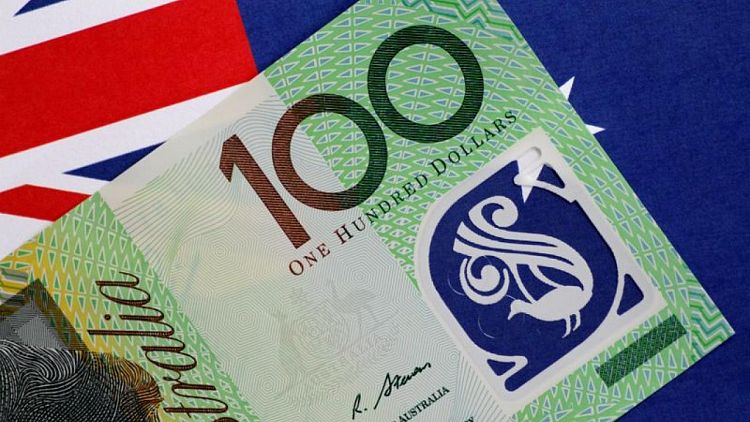By Ritvik Carvalho
LONDON - Risk-sensitive currencies such as the Australian dollar and Chinese yuan jumped and the safe-haven yen eased slightly on Wednesday after Chinese property giant Evergrande said it would make an upcoming yuan bond coupon payment, allaying immediate fears of a default.
Some of the excitement fizzled, however, after traders realised it was still not known whether the developer would be able to pay the coupon on its offshore dollar bonds, due on Thursday.
The Australian dollar rose as much as 0.49% to $0.7268 before giving up part of the gains to trade at $0.7247, up 0.2% on the day. The yen weakened about 0.2% to 109.43 to the dollar, showing little reaction to the Bank of Japan's decision to keep policy on hold.
"Risk assets are navigating calmer waters this morning, as the reopening of Chinese markets after a four-day holiday saw the People's Bank of China pump extra liquidity into the banking system through reverse repurchase agreements," ING said in a note to clients.
"Also contributing to limiting losses in Chinese equities was the news that Evergrande has negotiated an interest payment for its 5.8% 2025 bond due tomorrow. As a consequence, U.S. stock futures are pointing at a positive open, and the FX market saw a dominance of risk-on moves with commodity currencies gaining against safe-havens this morning."
Investors are still nervous about the fate of Evergrande, which missed interest payments due on Monday to at least two of its largest bank creditors, Bloomberg reported.
The dollar index stood at 93.188 in by midday trade in London, staying not far off Monday's one-month high of 93.455.
The euro hardly budged at $1.1733, having stabilised at a one-month low of $1.1700 on Monday.
Earlier, the common currency dropped to a seven-month low of 127.93 yen, as the safe-haven Japanese currency was supported by the cautious mood.
The Chinese yuan firmed to 6.4654 per dollar, edging back from one-month low of 6.4878 set on Monday.
FED LIFTOFF
Another major focus for the day is the U.S. Federal Reserve, which is expected to drop more hints on its future policy path, including when it might start tapering its bond buying and when to begin raising interest rates.
There are rising expectations the central bank will signal plans to start reducing its massive bond purchases in November if incoming data holds up.
The so-called "dot plot", which charts policymakers' economic and rates projections, could offer clues on when the Fed will hike interest rates from the current near zero level.
"Longer-dated U.S. Treasury yields continue to coil in a very constricted range and Fed expectations have been stuck in neutral for weeks, with neither budging notably on the recent market volatility in risky assets," said Steen Jakobsen, chief investment officer at Saxo Bank.
"This suggests little anticipation of a surprise at today’s FOMC meeting and keeps the bar rather low for a hawkish surprise scenario, as the Fed has been seen as unlikely to shift current expectations, with Fed Chair Powell’s dovish Jackson Hole speech on transitory inflation and a lower-than-expected August CPI data."
10-year U.S. Treasury yields traded at 1.3379%, within recent ranges.
"If the Fed does decide to announce a scale back of asset purchases at this meeting, in order to avoid a market upset it would need to provide clear direction on timing and a road map as to how it plans to reduce its $120B asset purchases," said Ali Jaffari, head of North American capital markets at Validus Risk Management.
"I suspect this will be done gradually, i.e. ~$15B - $20B monthly pull back, to accommodate a smooth market transition. How the market actually digests this remains to be seen."
Cryptocurrencies bounced back a tad after plunges in the previous session.
Bitcoin rose 5% to $42,754 after having hit a 1-1/2-month low of $39,573. Ether bounced 6% to $2,950, having fallen to as low as $2,732, down more than 30% from a four-month peak hit earlier this month.



